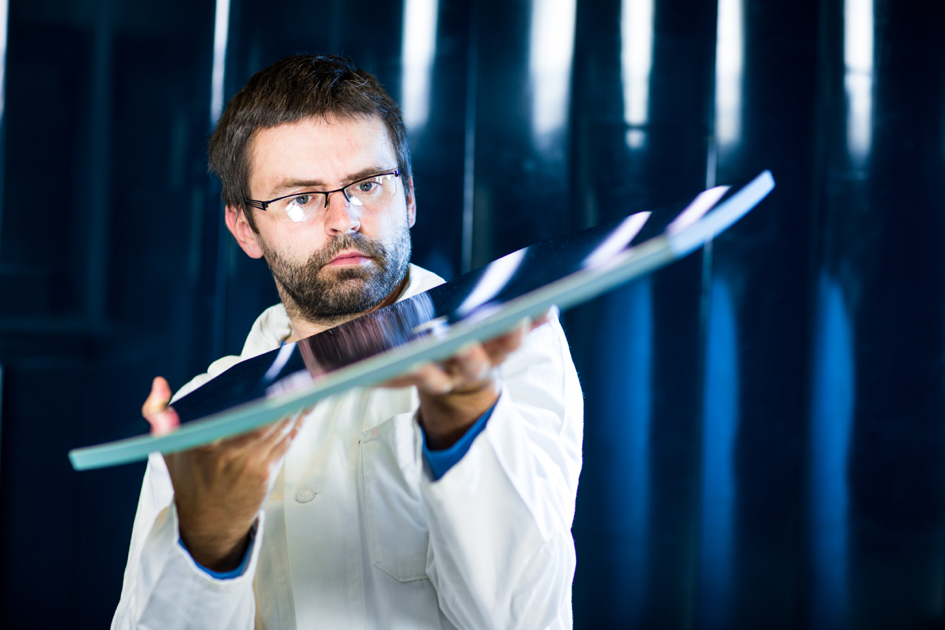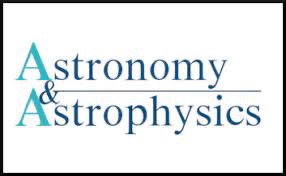Laser and optical technologies

This group deals for a long time with advanced approaches and applications focused on various areas of applied optics. The main focus has been on proposals, analyses, designs and production of non-standard optical elements and systems (both imaging and non-imaging), e.g., optical systems of fluorescent detectors determined for cosmic rays research. Optical technologies (innovation of classical technologies for processing of hard and very hard materials, especially of glass) – rough and fine grinding, polishing, novel approach to surface glass processing using the subaperture method have been developed and employed. Related development has been performed in the area of optical layers and the methods of their analysis.
The ability to manufacture ultra-lightweight mirror surfaces of large dimensions is a group specialty employed for instance in the Pierre Auger Observatory (PAO) located in Argentina (see, e.g., Nucl. Instrum. Meth. Phys. Res. Sec. A 2010, 620, 227), where the group still continues its share of operation, maintenance, and upgrades of the observatory and recently also contributed to the development of a new method of calibration of fluorescence telescopes (Opt. Laser Technol. 2025, 187, 112766). The success of PAO resulted in involvement in the international collaboration CTA – Cherenkov Telescope Array – where the subgroup develops measurement systems and methods for quality evaluation of production and service wear of mirror samples, supplied by different potential producers and intended for using in optical telescopes as detectors of cosmic rays (Astropart. Phys. 2013, 43, 3). Since both these projects rely on observation of secondary phenomena in the atmosphere, the fluorescence properties of the atmosphere have been of particular interest (Astropart. Phys. 2013, 42, 90). The need for long-time observation of the cloud-coverage and optical background of the night sky resulted in the design and construction of a specialized autonomous all-sky camera (EPJ Web Conf. 2016, 144, 01005). The cameras have been in the possible locations of CTA observatories (four cameras are already installed in the USA and Argentina, one in Chile, Namibia, Canary Islands and Mexico), and are also included in Pierre Auger Observatory in Argentina as a part of observatory control system. Prototypes of telescopes developer for the CTA observatory are currently placed in the site of the Astronomical Institute AS CR in Ondřejov and serve for testing of advanced technologies of detection of ultra-high-energy gamma photons and stellar interferometry (J. Cosmol. Astropart. Phys. 2025, 47).
In the framework of the FAST collaboration the group (being one of the grounding members) substantially contributed to the development of a new generation of inexpensive detectors of cosmic radiation (J. Instrum. 2020, 15, T10009). Currently there are five prototypes in operation (three on the norther hemisphere, Telescope Array site, Utah, USA, and two at the southern hemisphere, Pierra Auger Observatory site, Malargüe, Argentina), being thus the only devices for detection ultra-high-energy cosmic radiation placed at both hemispheres (EPJ Web Conf. 2023, 283, 06010).
The subgroup contributes also to other tasks applicable in the industry (e.g., device controlling in real-time color markings of coil springs produced at production line for automotive industry (J. Opt. Soc. Am. A 2020, 37, 1583), or research and optimization of optical systems for yarn quality management during its production). The involvement of the team in Pierre Auger and CTA collaborations resulted in contribution to more than 100 publications in Web-of-Science-registered journals (např. Science 2017, 357, 1266). In these collaborations, the team closely cooperates with the Astroparticle physics group of the Institute of Physics of AS CR.
In the area of material properties, the group was focused primarily on the experimental analysis of mechanical and tribological properties at small scales using the state-of-the-art equipment and methods. In most cases the work was driven by both the scientific curiosity and the technological interest. Various types of materials were tested including thin films and coatings (ceramics, metals, nanocomposites) (Surf. Coat. Technol. 2011, 205, 3372; Surf. Coat. Technol. 2012, 206, 3580), plasma sprayed coatings (Ceramics Int. 2010, 36, 2155), single crystals (Appl. Phys. Lett. 2014, 105, 082906) and other bulks. Depth sensing nanoindentation and scratch tests were performed at room temperature and at elevated temperatures up to 500 °C. It should be noted that this subgroup is the only one in the Czech Republic experienced in the high temperature measurements at nano/micro scale and belongs to a limited number of groups worldwide capable to explore nanomechanical properties at elevated temperatures. In case of thin films and plasma sprayed coatings the mechanical characteristics were correlated with the structure and with the parameters of the deposition process providing a comprehensive description of the studied material. Besides, the temperature stability of the films’ structure and mechanical properties was explored. Especially the potential of hard SiCN (Surf. Coat. Technol. 2014, 240, 76), superhard B4C films (Diam. Relat. Mat. 2009, 18, 27), or nanocrystalline diamond for applications in nuclear power stations (Sci. Rep. 2017, 7, 6469) were systematically studied. The research works dealing with thin films and coatings were mainly performed under the cooperation with the Institute for Problems of Materials Science, Academy of Sciences of Ukraine. In cooperation with the Virginia Polytechnic Institute and State University, a modified nonisothermal nanoindentation method was developed to directly detect the negative stiffness of ferroelectric material at its Curie point and to quantify the negative stiffness without the need for embedding it into a matrix. Another group specialty is the combination of nanomechanical tests with analysis of acoustic emission that enables deep view at the processes of structural changes inside materials and layers (JOM 2019, 71, 3358; Mater. Sci. Eng. A 2020, 780, 139159). The group also prepares nanostructured thin films using cold plasma deposition, e.g., for applications in the area of surface enhanced Raman scattering (Appl. Surf. Sci. 2023, 618, 156703; J. Mater. Sci. 2024, 59, 16918). In this area, several technological processes and devices were patented.
In the area of laser technologies, the overlap welding of thin stainless steel sheets was performed by means of the pulsed Nd:YAG laser system with variable laser parameters, that influence was investigated on the samples cross-sections by laser scanning microscopy. Numerical model of the pulsed welding was created by software SYSWELD with the goal to estimate the amount of the absorbed energy (Metallurg. Mater. Trans. B 2010, 41, 1108; Metallurg. Mater. Trans. B 2014, 45, 1116). The possibility of the on-line monitoring of the welding process was investigated both on our own Nd:YAG pulsed laser system and on industrial continual CO2 laser in the facility of an industrial partner (J. Mater. Process. Technol. 2012, 12, 910). UV – spectrometer or UV – photodiode data were collected and evaluated by the developed software LWM – Laser welding monitor (J. Mater Eng. Perf. 2012, 21, 764). Numerical model of the overlapped laser surface melting was created to optimize the process and tested at the site of the industrial partner, while the surface modification was evaluated by contact profilometry. Besides these main tasks, laser liquid-assisted scribing of silicon, indirect backside glass marking, and laser interaction with nanoparticles were performed. Also, the research of propagation and shaping of extremely powerful light beams (in collaboration with ELI Beamlines project and industrial environment) have been pursued.
Latest publications of the group
-
Václavek, L; Tomaštík, J; Nozka, L; Procházka, V; Lisníková, S; Čtvrtlík, R: Mechanical and optical properties of HfO2 thin films prepared by evaporation with ion-assisted deposition, Mater. Today Commun. 49 114125 (2025).

-
Vacula, M; Horvath, P; Chytka, L; Daumiller, K; Engel, R; Hrabovsky, M; Jilek, V; Mandat, D; Mathes, HJ; Michal, S; Nozka, L; Palatka, M; Pech, M; Schäfer, CM; Schovanek, P; Svozilikova, Z: Development of a calibration light source based on a unique modification of an integrating sphere, Opt. Laser Technol. 187 112766 (2025).

-
Alispach, C; Araudo, A; Balbo, M; Beshley, V; Blazek, J; Borkowski, J; Boula, S; Bulik, T; Cadoux, F; Casanova, S; Christov, A; Chudoba, J; Chytka, L; Cechvala, P; Dedic, P; della Volpe, D; Favre, Y; Garczarczyk, M; Gibaud, L; Gieras, T; Glowacki, E; Hamal, P; Heller, M; Hrabovsky, M; Janecek, P; Jelínek, M; Jílek, V; Jurysek, J; Karas, V; Lacave, B; Lyard, E; Mach, E; Mandát, D; Marek, W; Michal, S; Michalowski, J; Miron, M; Moderski, R; Montaruli, T; Muraczewski, A; Muthyala, SR; Müller, AL; Nagai, A; Nalewajski, K; Neise, D; Niemiec, J; Nikolajuk, M; Novotny, V; Ostrowski, M; Palatka, M; Pech, M; Prouza, M; Schovanek, P; Sliusar, V; Stawarz, L; Stern: Observation of the Crab Nebula with the Single-Mirror Small-Size Telescope stereoscopic system at low altitude, Astron. Astrophys. 699 A255 (2025).

-
Hibino, K; Olejnicek, J; Yamanoi, K; Ponseca, CS Jr; Shuaib, A; Maruyama, Y; Pisarikova, A; Kohout, M; Cada, M; Kapran, A; Akabe, Y; Sarukura, N; Hubicka, Z; Ono, S; Cadatal-Raduban, M: Impact of electron cyclotron wave resonance plasma on defect reduction in ZnO thin films, Sci Rep 15 (1) 5555 (2025).

-
Alispach, C; Araudo, A; Balbo, M; Beshley, V; Biland, A; Blazek, J; Borkowski, J; Bulik, T; Cadoux, F; Casanova, S; Christov, A; Chudoba, J; Chytka, L; Dedic, P; della Volpe, D; Favre, Y; Garczarczyk, M; Gibaud, L; Gieras, T; Hamal, P; Heller, M; Hrabovsky, M; Janecek, P; Jelínek, M; Jílek, V; Jurysek, J; Karas, ZV; Lacave, B; Lyard, E; Mach, E; Mandát, D; Marek, W; Michal, S; Michalowski, J; Moderski, R; Montaruli, T; Muraczewski, A; Muthyala, S; Müller, AL; Nagai, A; Nalewajski, K; Neise, D; Niemiec, J; Nikolajuk, M; Novotny, V; Ostrowski, M; Palatka, M; Pech, M; Prouza, M; Rajda, P; Schovanek, P; Seweryn, K; Sliusar, V; Stawarz, L; Sternberger, R; St: The SST-1M imaging atmospheric Cherenkov telescope for gamma-ray astrophysics, J. Cosmol. Astropart. Phys. (2) 47 (2025).

Latest publications of the Pierre Auger Collaboration (including JLO members)
-
Aab, A et al. (Chytka, L.; Horvath, P.; Hrabovsky, M.; Michal, S.; Nozka, L.; Supik, J.; Vaclavek, L.; Vacula, M.; Hamal, P.; Mandat, D.; Palatka, M.; Pech, M.; Schovanek, P.): The FRAM robotic telescope for atmospheric monitoring at the Pierre Auger Observatory, J. Instrum. 16 (6) P06027 (2021).

-
Aab, A et al. (Chytka, L.; Horvath, P.; Hrabovsky, M.; Michal, S.; Nozka, L.; Supik, J.; Vaclavek, L.; Vacula, M.; Hamal, P.; Mandat, D.; Palatka, M.; Pech, M.; Schovanek, P.): Extraction of the muon signals recorded with the surface detector of the Pierre Auger Observatory using recurrent neural networks, J. Instrum. 16 (7) P07016 (2021).

-
Aab, A et al. (Chytka, L.; Horvath, P.; Hrabovsky, M.; Michal, S.; Nozka, L.; Supik, J.; Vaclavek, L.; Vacula, M.; Hamal, P.; Mandat, D.; Palatka, M.; Pech, M.; Schovanek, P.): Deep-learning based reconstruction of the shower maximum X(max)( )using the water-Cherenkov detectors of the Pierre Auger Observatory, J. Instrum. 16 (7) P07019 (2021).

-
Aab, A et al. (Chytka, L.; Horvath, P.; Hrabovsky, M.; Michal, S.; Nozka, L.; Supik, J.; Vaclavek, L.; Vacula, M.; Hamal, P.; Mandat, D.; Palatka, M.; Pech, M.; Schovanek, P.): Design and implementation of the AMIGA embedded system or data acquisition, J. Instrum. 16 (7) T07008 (2021).

-
Aab, A et al. (Chytka, L.; Horvath, P.; Hrabovsky, M.; Michal, S.; Nozka, L.; Supik, J.; Vaclavek, L.; Vacula, M.; Mandat, D.; Palatka, M.; Pech, M.; Schovanek, P.): Measurement of the Fluctuations in the Number of Muons in Extensive Air Showers with the Pierre Auger Observatory, Phys. Rev. Lett. 126 (15) 152002 (2021).

Group of Laser and Optical Technologies (in alphabetical order)
Bc. Anna ARONOVÁ
professional / M.Sc. Student

material analysis
Bc. Mgr. Petr BOŘIL
Ph.D. student

optical technologies
optical systems and technologies for astroparticle physics
Ing. Petr BUCHNÍČEK
researcher

optical technologies
CNC grinding and polishing of optical surfaces
Mgr. Martin ČADA, Ph.D.
assistant professor

physics of surfaces and layers
deposition of thin layers using magnetron sputtering
RNDr. Hana CHMELÍČKOVÁ
researcher / teaching advisor

laser technologies
laser welding, cutting, and surface treatment
department secretary, credit consultant
Mgr. Martina HAVELKOVÁ
researcher

topography of surfaces (profilometry)
mathematical modeling
project adminitration (MEYS)
administration of properties and teaching schedule
Mgr. Zdeněk HUBIČKA, Ph.D.
assistant professor

physics of surfaces and layers
deposition of thin layers using magnetron sputtering
Mgr. Vlastimil JÍLEK
Ph.D. student

optical technologies
development of fluorescence detectors for FAST Collaboration
SST-1M telescopes (Ondřejov)
JLO social networks editor
Ing. Martin KITTLER
professional

optical technologies
development of CNC technologies for large optical surfaces
Mgr. Jakub KMEC, Ph.D.
postdoc

mathematical modeling for applications in physics
image analysis
data analysis in astroparticle physics
flow in porous media
Mgr. Dušan MANDÁT, Ph.D.
leading researcher

development of cosmic radiation detectors
collaborations Pierre Auger, FAST, CTA, SWGO
technologies for SST-1M telescopes (Ondřejov)
Mgr. Stanislav MICHAL, Ph.D.
postdoc

optical technologies
characterization of optical surfaces
doc. Mgr. Libor NOŽKA, Ph.D.
researcher / associate professor

optical technologies for particle physics
physics of surfaces and layers
elipsometry
microscopy
RNDr. Miroslav PALATKA
researcher

classical wave and ray optics
design of optical systems
collaborations Pierre Auger and FAST
Eva PALIČKOVÁ
professional / administrative

applied research support
labor safety agenda
Mgr. Miroslav PECH, Ph.D.
leading researcher

optical technologies
development of cosmic ray detectors
collaborations Pierre Auger, FAST, CTA, SWGO, POEMMA
Ing. Petr PÍSAŘÍK
Ph.D. student

physics of surfaces and layers
deposition of thin layers using magnetron sputtering
Ing. Aneta PÍSAŘÍKOVÁ
Ph.D. student

physics of surfaces and layers
deposition of thin layers using magnetron sputtering
RNDr. Petr SCHOVÁNEK
researcher / deputy head of the laboratory / head of the group

optical technologies
technologies of large optical surfaces
physics of surfaces and thin layers
Mgr. Zuzana SVOZILÍKOVÁ
Ph.D. student

astroparticle physics
detection of ultra-high-energy cosmic radiation particles
Mgr. Jan TOMÁŠTÍK, Ph.D.
researcher

physics of surfaces and layers
deposition of thin layers using magnetron sputtering
mechanical properties of thin layers, nanoindentation
outreach
RNDr. Petr TRÁVNÍČEK, Ph.D.
assistant professor

astroparticle physics
Vladimír URBÁŠEK
professional

optoelectronics
development of specialized electronics circuits
Mgr. Lukáš VÁCLAVEK
Ph.D. student

physics of surfaces and layers
deposition of thin layers using PVD methods (steaming, magnetron sputtering)
mechanical properties of thin layers, nanoindentation, microscopy
Mgr. Martin VACULA, Ph.D.
postdoc

optical technologies
developemnt of fluorescence telescopes of cosmic radiation
colaboration Pierre Auger



